NASA’s Chandra X-ray Observatory telescope recently detected X-rays from Uranus, the 7th planet in our solar system. This major breakthrough of Chandra X-ray Observatory will reveal the hidden secrets of this ice giant planet. Chandra X-ray Observatory is one of the four NASA’s series of Great Observatory satellites. The other three are Hubble Space Telescope, Compton Gamma Ray Observatory, and Spitzer Space Telescope. In this article, we will discuss in detail Chandra X-ray Observatory and its discoveries.
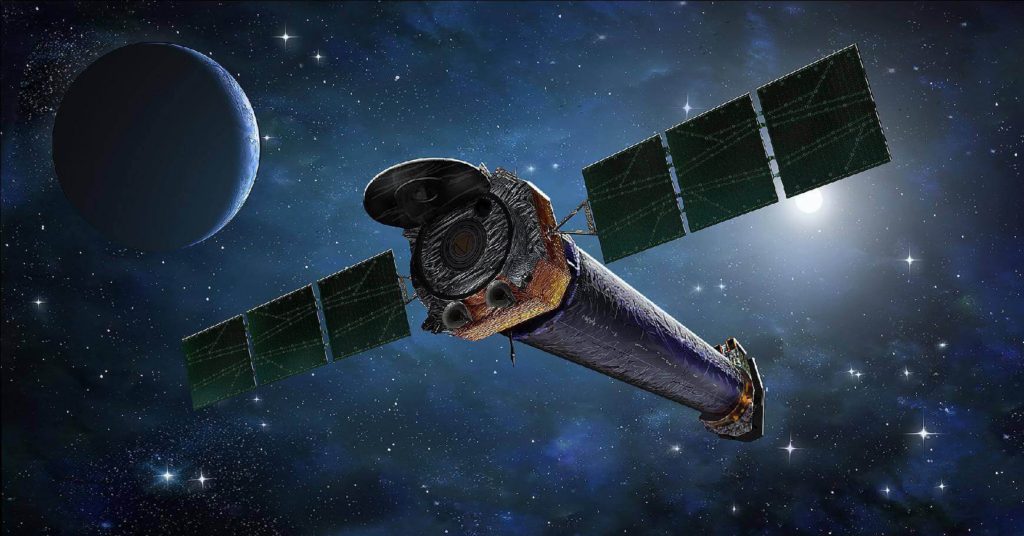
Table of Contents
X-ray Telescopes – The Journey So Far
X-ray is a part of the electromagnetic spectrum. X-ray telescopes are designed to detect the X-rays coming out of hot bodies such as the Sun, stars, neutron stars, binary star systems, black holes, supernova remnants, and even sometimes comets. The X-ray telescopes intend to collect the X-ray photons emerging from these astronomical objects. X-ray telescopes are established outside the Earth’s atmosphere for successful X-ray detection.
- The first X-ray telescope capable of forming images of X-ray sources was called Apollo Telescope Mount. This observatory was launched in 1973 and was a part of Skylab, the first United States space station. The purpose of Apollo Telescope Mount was to identify the soft X-rays, ultra-violet, and visible light of the Sun.
- Apollo Telescope Mount was followed by three High-Energy Astronomy Observatories, HEAO-1 launched in 1977 and HEAO-2 launched in 1978. HEAO-1 surveyed the X-ray sky almost three times over the 0.2 keV – 10 MeV energy band. HEAO-2 had two X-ray detectors for X-ray sky survey along with one Gamma-ray Telescope to detect and localize gamma-ray bursts (GRBs). HEAO-2 was renamed Einstein Observatory after its launch. Einstein Observatory (HEAO-2) was the first X-ray telescope capable of forming images of X-ray sources in space. HEAO-3 launched in 1979 carried three instruments one for surveying the sky in hard X-rays and gamma rays, and two for studying cosmic rays.
- European Space Agency in 1983 launched European X-ray Observatory Satellite (EXOSAT). In comparison to Einstein Observatory, EXOSAT was more sensitive to X-rays due to its higher spectral resolution. EXOSAT used lunar occultation to obtain information about the X-ray sources.
- In a joint program of Germany, the USA, and the UK another X-ray telescope was launched in 1990. This satellite was called Röntgensatellit to honor in German X-rays are called Röntgenstrahlen, in honor of Wilhelm Röntgen, a German mechanical engineer who discovered X-rays. In short, Röntgensatellit is dubbed as ROSAT. The first detection of X-rays from protostars, comets, and the Moon was done by ROSAT.
- 4th mission of JAXA in cosmic X-ray astronomy was named Advanced Satellite for Cosmology and Astrophysics (ASCA, formerly named ASTRO-D). This X-ray astronomy mission used a charge-coupled device (CCD) for the first time and was launched on February 20, 1993.
- With the purpose of measuring time variability in the emission of X-ray sources on December 30, 1995, a satellite was launched by NASA. In the honor of physicist Bruno Rossi, it was named Rossi X-ray Timing Explorer (RXTE).
- Finally, on July 23, 1999, NASA launched one of its Great Observatories the Chandra X-ray Observatory. It was proposed in 1976 with its previous name Advanced X-ray Astrophysics Facility later changes to CXO in 1998. The Chandra X-ray observatory is named after Subrahmanyan Chandrasekhar, an Indian-American astrophysicist who was awarded the 1983 Nobel Prize for Physics with William A. Fowler for their contribution in the field of “stellar evolution”. Chandra X-ray Observatory is famous for its contributions to X-ray astronomy in a similar manner the Hubble Space Telescope is famous optical astronomy.
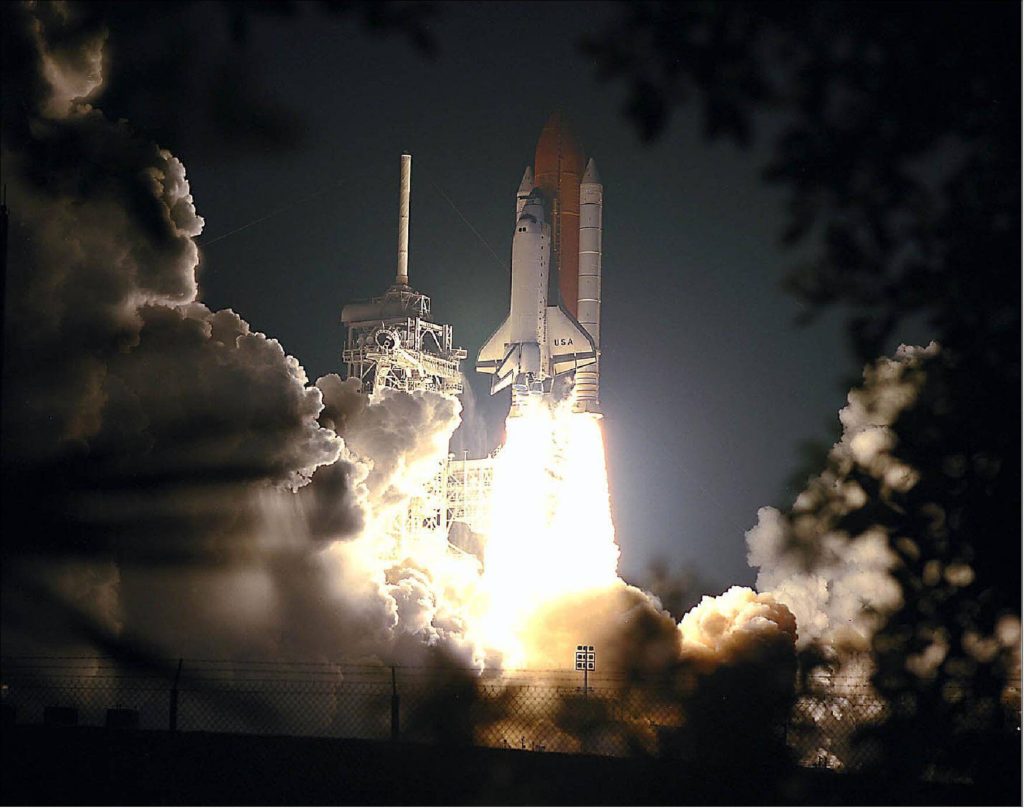
- Shortly after the launch of Chandra spacecraft, on 10 December 1999, the European Space Agency launched a similar X-ray telescope XMM-Newton, which is an X-ray Multi-Mirror Mission named after Sir Isaac Newton. It carries 3 high throughput X-ray telescopes and can simultaneously collect X-rays, visible and ultraviolet light.
- Neil Gehrels Swift Observatory is a multiwavelength space observatory specially designed to study gamma-ray bursts. One of its instruments known as the X-ray Telescope (XRT) observes the gamma-ray bursts in the X-ray band. Swift was launched by NASA on November 20, 2004, under a gamma-ray astronomy mission.
- An international collaboration of the Institute of Space and Aeronautical Science at JAXA and NASA’s Goddard Space Flight Center launched the SUZAKU (ASTRO-EII) mission. This X-ray astronomy satellite contained five X-ray mirrors XRT and five focal plane detectors with the objective of studying hot plasmas in terms of X-ray and gamma-ray. This 5th Japanese X-ray astronomy satellite was launched on July 10, 2005.
- The first orbiting telescope dedicated to high-energy X-rays was launched on 13 June 2012 under the name NuSTAR (Nuclear Spectroscopic Telescope Array) mission. This is the first space-based direct-imaging X-ray telescope at energies beyond those of the Chandra X-ray Observatory and XMM-Newton. Its prime objective is to supermassive black holes.
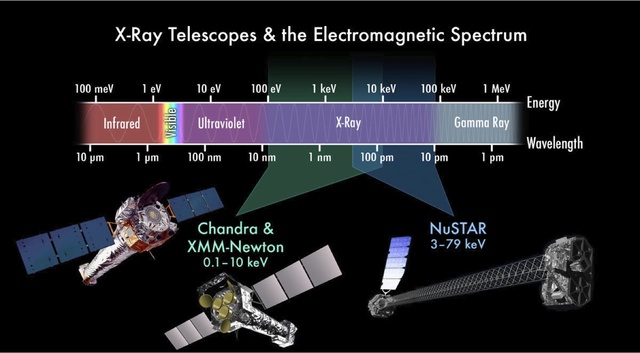
- Another advanced X-ray Observatory mission by European Space Agency within its Cosmic Vision programme is slated to be launched in 2031. As of now, it is named Advanced Telescope for High Energy Astrophysics.
Suggested Reading –
- First-Ever REAL Black Hole Image
- Polarized Image of Black Hole
- Nobel Prize in Physics for 2020
- Stephen Hawking’s theory of Dark Matter
Chandra X-ray Observatory Facts
Chandra X-ray Observatory telescope is a state-of-the-art scientific instrument and the following are some interesting facts about the Chandra X-ray telescope that makes it outstanding in the field of X-ray astronomy.
- We know that the black hole gravity is so high that even light can not escape it. The #1 cool fact about Chandra X-ray Observatory is that it can observe X-rays from particles up to the last second before they fall into a black hole! This fact tells a lot about the powerful build of this X-ray telescope which makes it the best in the world.
- Including its inertial upper stage and support equipment, this space observatory is the heaviest and largest payload launched by a space shuttle.
- Chandra X-ray Observatory flies 200 times higher than the Hubble telescope, this is more than one-third distance from the Earth to the moon.
- The space mission that deployed the Chandra X-ray Observatory telescope in the orbit (STS-93) was commanded by a woman named Eileen Collins. STS-93 (Chandra spacecraft) was the first shuttle mission of NASA to be commanded by women.
- The light from quasars observed by Chandra traveled through space for ten billion years. Chandra Observatory is the most sensitive X-ray telescope ever built.
- A standard hairdryer uses about 2 kilowatts of power on its high setting, that is the power required to operate Chandra spacecraft.
- Chandra has 8 times more resolution than its predecessors. In practical terms, it is equivalent to reading a stop sign at a distance of 12 miles.
- The surface of Chandra’s mirrors is so smooth that if the same level of smoothness is provided to the Earth then its tallest mountain would have been less than two meters tall.
- Chandra X-ray space telescope length equals 45 making it the largest satellite the space shuttle has ever launched.
- While maneuvering Chandra from one target to the next, the slew rate is lesser compared to the minute hand on a clock.
- Consider a gas cloud so vast that the fastest thing light takes 5 million years to go from one end to the other. Chandra is so powerful that it can detect X-rays from this cloud.
You may also like to read-
- Artemis Mission of NASA
- BepiColombo Mission to Mercury
- AstroSat discovered AUDFs01 galaxy
- Atmospheric Waves Experiment
Chandra X-ray Observatory Purpose
The fundamental idea of deploying the Chandra telescope is to detect the astrophysical X-rays emerging out from hot astronomical bodies. X-rays are produced when the matter is heated to millions of degrees. Such high temperatures occur where extreme magnetic fields, or intense gravity, or explosive forces, exist predominantly. Upon collision of charged particle say an electron, some energy is lost by the particles in the form of photons, which traves with the speed of light from their place of emergence. Due to the lightest weight of electrons, it is assumed that most of the photons in the universe are generated from the election collision.
The Chandra X-ray telescope can detect such hot, highly energetic regions of space by detecting the X-rays coming out of them. The detection of such hot regions will inspire the second step of measuring the hot region. Upon studying the hot regions and identifying the rate of expansion of the cluster of galaxies, the fireball of the Big Bang can be tracked. The amount of dark matter can also be analyzed that is represented by the pressure in the hot gas. All these answers will finally determine the fate of the universe, will it expand forever or will collapse ultimately.
The Sun was the first celestial object discovered to emit X-rays with the help of Apollo Telescope Mount.
Chandra X-ray Observatory Elements
The Chandra X-ray observatory has three main elements divided into the spacecraft system, the telescope system, and the science instruments Module.
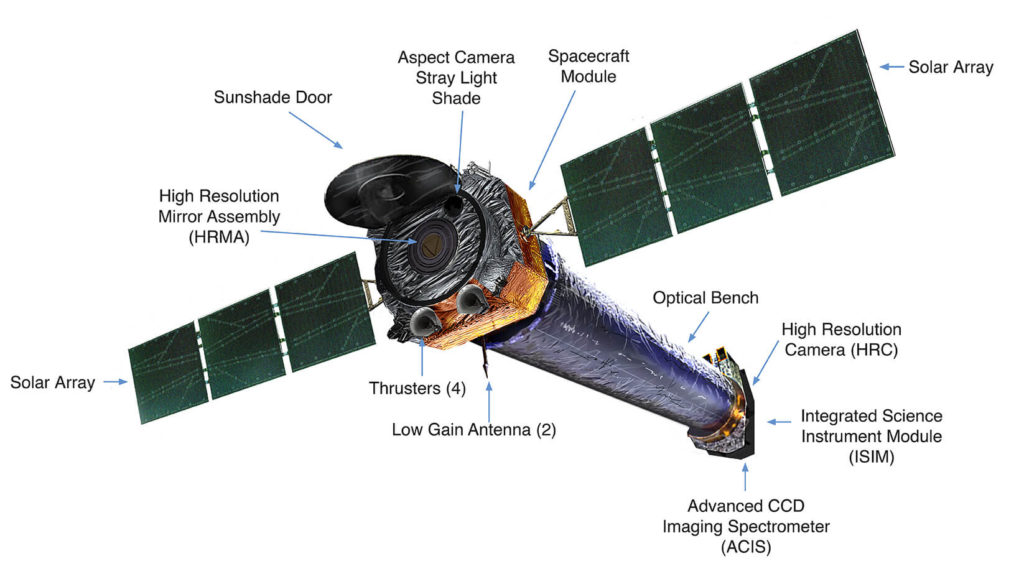
The Spacecraft System
This part of the observatory containing computers, communication antennas, and data recorders is considered under the spacecraft system. These entities are helpful in making a communication link between the observatory and ground station. To prevent it from excessive light sun sensor is also provided. To generate the power solar arrays are installed that also charge three nickel-hydrogen batteries used as a backup.
The Telescope System
High-Resolution Mirror Assembly (HRMA) is the main part of the Chandra telescope system. These mirrors are in paraboloid and hyperboloid shapes and the surface is coated with iridium or gold. This complex mirror assembly is required as the high-energy X-rays can easily penetrate normal mirrors. 2 sets of 4 nested mirrors make special cylindrical mirrors. The incoming X-rays after reflections are funneled to the instrument part for study. This mirror assembly is covered for insulation to keep the same internal temperature.
Science Instrument Module
Working of the instrument section covers collecting and studying the X-rays. The SIM (Science Instrument Module) holds two focal-plane cameras. The first instrument is ACIS (Advanced CCD Imaging Spectrometer) for recording the position and energy of the X-rays. The second instrument is HRC (High-Resolution Camera) for recording the X-ray images. These two instruments complement each other. For more detailed energy information two diffraction gratings are available that can be inserted between the path of the X-ray between telescope and detectors. Both the gratings have different usage depending upon the X-ray energies.
How does the Chandra telescope work?
Chandra X-ray space telescope is located outside the Earth’s atmospheric region and deployed above Earth’s atmosphere up to an altitude of 86,500 mi (139,000 km) in space. A large number of X-rays are absorbed by the atmosphere and for this reason, we need space-based X-ray telescopes. The Chandra telescope can produce full-color images of X-ray-emitting objects and provide information about the wavelength and intensity. Chandra telescope is operated from Chandra X-Ray Center at the Harvard-Smithsonian Center for Astrophysics in Cambridge, Massachusetts.
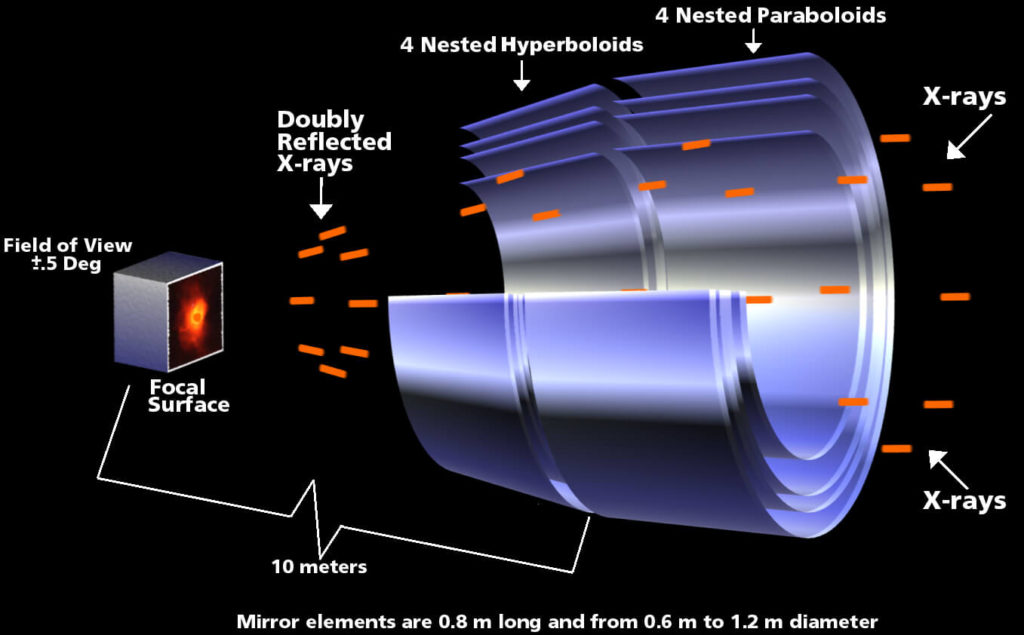
Incoming X-ray is incident on the mirror of highly polished four pairs of Chandra mirrors. This X-ray bounces with the help of secondary mirrors to get focused. After the skip-down process, the X-ray travels a 26-foot telescope tube towards the scientific instrument section. In between the path, gratings can be moved into. The instrument section is controlled manually for imaging and detailed analysis of the X-ray.
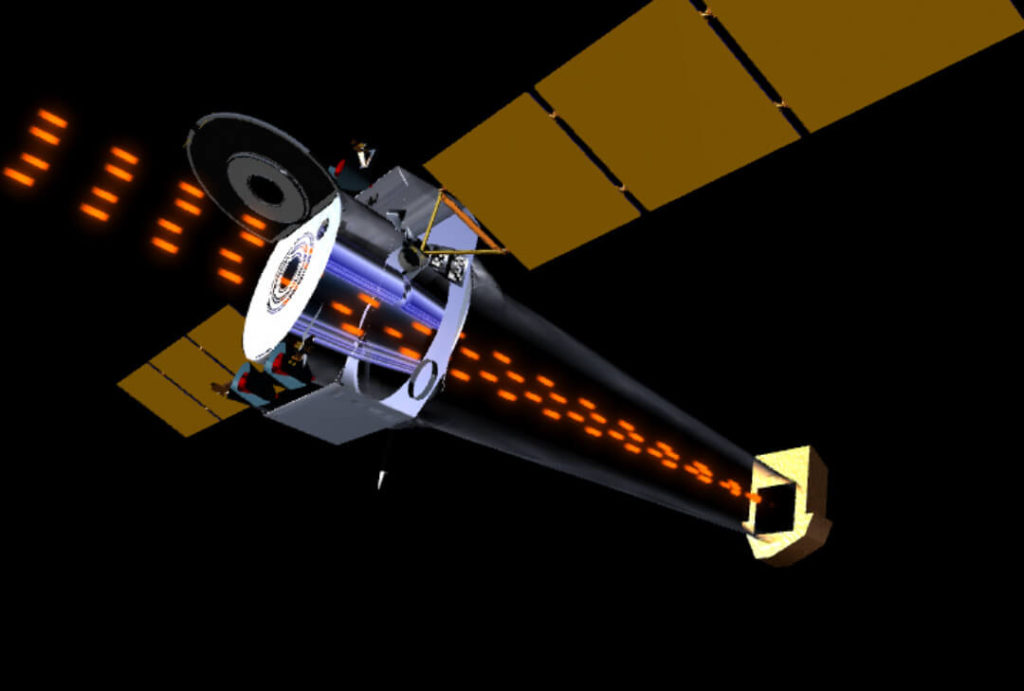
Chandra X-ray Observatory Discoveries
NASA’s Chandra telescope opens a treasure trove of cosmic delights. Although the Chandra telescope was launched projecting an expected lifetime of 5 years, on September 4, 2001, NASA extended its lifetime to 10 years due to its outstanding job. Physically Chandra could last much longer. A 2004 study that took place at the Chandra X-ray Center pointed out that the observatory could last at least 15 years. The journey of the Chandra X-ray telescope still continues even in 2021 (under safe mode operations) and has been helping scientists tremendously since its launch. Below mentioned are some of the interesting discoveries of the Chandra X-ray Observatory.
- As per the latest release on March 31, 2021, Chandra has detected the X-rays from Uranus. Previous observations done by the Chandra telescope were used for this discovery. Determining the cause of X-ray emitted by Uranus will be helpful to know the source of X-rays coming from black holes and neutron stars. A research paper published in the Journal of Geophysical Research describes the results of the latest discovery.
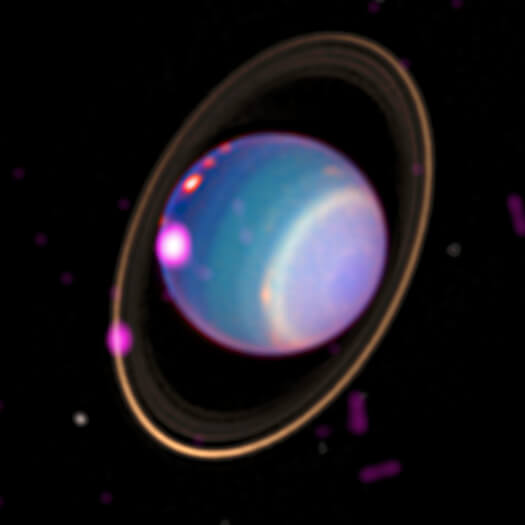
- In Sepetember, 2016 Chandra telescope detected X-rays from Pluto. Data collected by NASA’s New Horizons spacecraft in 2014 and 2015 helped this discovery.
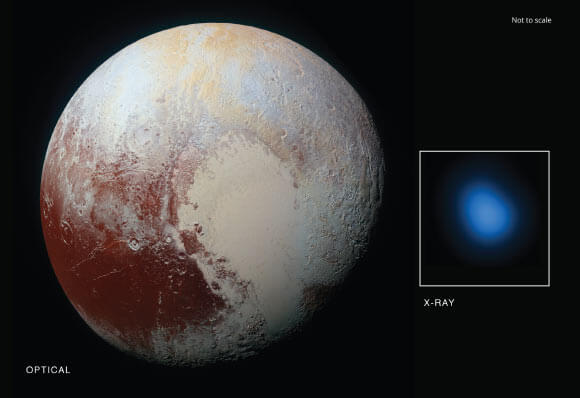
- In January 2015 NASA’s Chandra X-ray Observatory observed the largest X-ray flare ever detected from the supermassive black hole (Sagittarius A*) at the center of the Milky Way galaxy.
- In November 2013, the presence of Jet at the center of the Milky Way galaxy was confirmed with the help of the Chandra X-ray telescope.
- In September 2013, Chandra with the help of the Hubble Space Telescope found the proof of the densest nearby galaxy known as M60-UCD1.
- In September 2012, Chandra observatory provided evidence of an enormous halo of hot gas (in blue color) around the Milky-Way galaxy.
- In August 2006 direct proof of dark matter was provided by NASA’s Chandra and other telescopes.
- On December 21, 2000, using data from NASA’s Chandra and the National Science Foundation’s Very Large Array (VLA), a team of high school students, discovered the first evidence of a neutron star in the nearby supernova remnant IC443.
- The first intermediate-mass black hole was discovered by the Chandra telescope observatory about 600 light-years from the center of the Messier 82 (M82), also known as the Cigar Galaxy.
Conclusion
The unique sensitivity and precision of the Chandra telescope have resulted in significant advancement in the areas of astronomy. Chandra’s assistance in providing the answers to the questions of great importance such as What and where is the dark matter in our universe? What is the powerhouse driving the explosive activity in many distant galaxies? Does the Universe contain “dark energy” and if so, how important is it? is phenomenal. That is not all, the world’s most powerful X-ray telescope still has a lot to deliver to us.



0 Comments